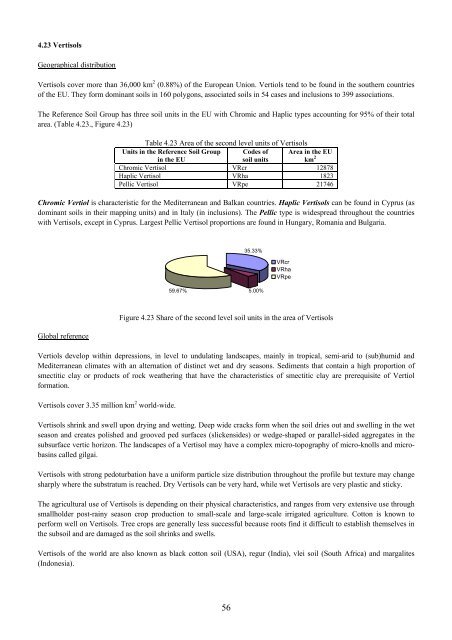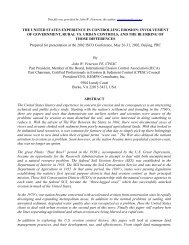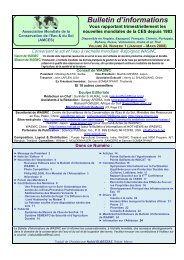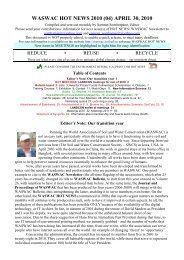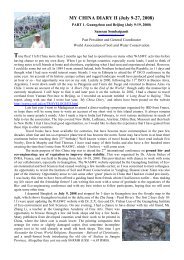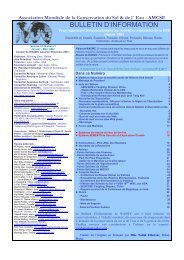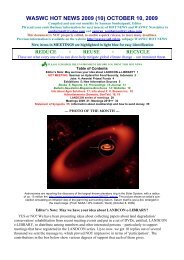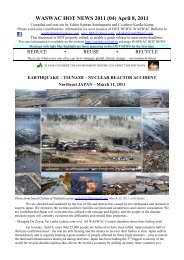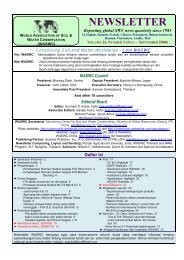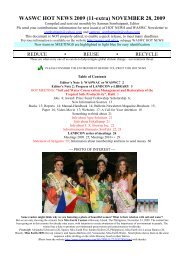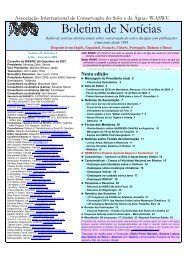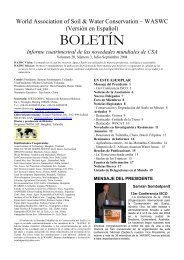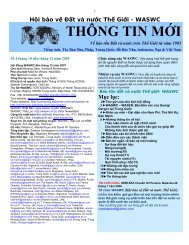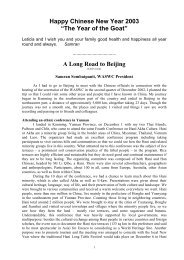Soils of the European Union - European Soil Portal - Europa
Soils of the European Union - European Soil Portal - Europa
Soils of the European Union - European Soil Portal - Europa
You also want an ePaper? Increase the reach of your titles
YUMPU automatically turns print PDFs into web optimized ePapers that Google loves.
4.23 VertisolsGeographical distributionVertisols cover more than 36,000 km 2 (0.88%) <strong>of</strong> <strong>the</strong> <strong>European</strong> <strong>Union</strong>. Vertiols tend to be found in <strong>the</strong> sou<strong>the</strong>rn countries<strong>of</strong> <strong>the</strong> EU. They form dominant soils in 160 polygons, associated soils in 54 cases and inclusions to 399 associations.The Reference <strong>Soil</strong> Group has three soil units in <strong>the</strong> EU with Chromic and Haplic types accounting for 95% <strong>of</strong> <strong>the</strong>ir totalarea. (Table 4.23., Figure 4.23)Table 4.23 Area <strong>of</strong> <strong>the</strong> second level units <strong>of</strong> VertisolsUnits in <strong>the</strong> Reference <strong>Soil</strong> Groupin <strong>the</strong> EUCodes <strong>of</strong>soil unitsArea in <strong>the</strong> EUkm 2Chromic Vertisol VRcr 12878Haplic Vertisol VRha 1823Pellic Vertisol VRpe 21746Chromic Vertiol is characteristic for <strong>the</strong> Mediterranean and Balkan countries. Haplic Vertisols can be found in Cyprus (asdominant soils in <strong>the</strong>ir mapping units) and in Italy (in inclusions). The Pellic type is widespread throughout <strong>the</strong> countrieswith Vertisols, except in Cyprus. Largest Pellic Vertisol proportions are found in Hungary, Romania and Bulgaria.35.33%59.67% 5.00%VRcrVRhaVRpeGlobal referenceFigure 4.23 Share <strong>of</strong> <strong>the</strong> second level soil units in <strong>the</strong> area <strong>of</strong> VertisolsVertiols develop within depressions, in level to undulating landscapes, mainly in tropical, semi-arid to (sub)humid andMediterranean climates with an alternation <strong>of</strong> distinct wet and dry seasons. Sediments that contain a high proportion <strong>of</strong>smectitic clay or products <strong>of</strong> rock wea<strong>the</strong>ring that have <strong>the</strong> characteristics <strong>of</strong> smectitic clay are prerequisite <strong>of</strong> Vertiolformation.Vertisols cover 3.35 million km 2 world-wide.Vertisols shrink and swell upon drying and wetting. Deep wide cracks form when <strong>the</strong> soil dries out and swelling in <strong>the</strong> wetseason and creates polished and grooved ped surfaces (slickensides) or wedge-shaped or parallel-sided aggregates in <strong>the</strong>subsurface vertic horizon. The landscapes <strong>of</strong> a Vertisol may have a complex micro-topography <strong>of</strong> micro-knolls and microbasinscalled gilgai.Vertisols with strong pedoturbation have a uniform particle size distribution throughout <strong>the</strong> pr<strong>of</strong>ile but texture may changesharply where <strong>the</strong> substratum is reached. Dry Vertisols can be very hard, while wet Vertisols are very plastic and sticky.The agricultural use <strong>of</strong> Vertisols is depending on <strong>the</strong>ir physical characteristics, and ranges from very extensive use throughsmallholder post-rainy season crop production to small-scale and large-scale irrigated agriculture. Cotton is known toperform well on Vertisols. Tree crops are generally less successful because roots find it difficult to establish <strong>the</strong>mselves in<strong>the</strong> subsoil and are damaged as <strong>the</strong> soil shrinks and swells.Vertisols <strong>of</strong> <strong>the</strong> world are also known as black cotton soil (USA), regur (India), vlei soil (South Africa) and margalites(Indonesia).56


